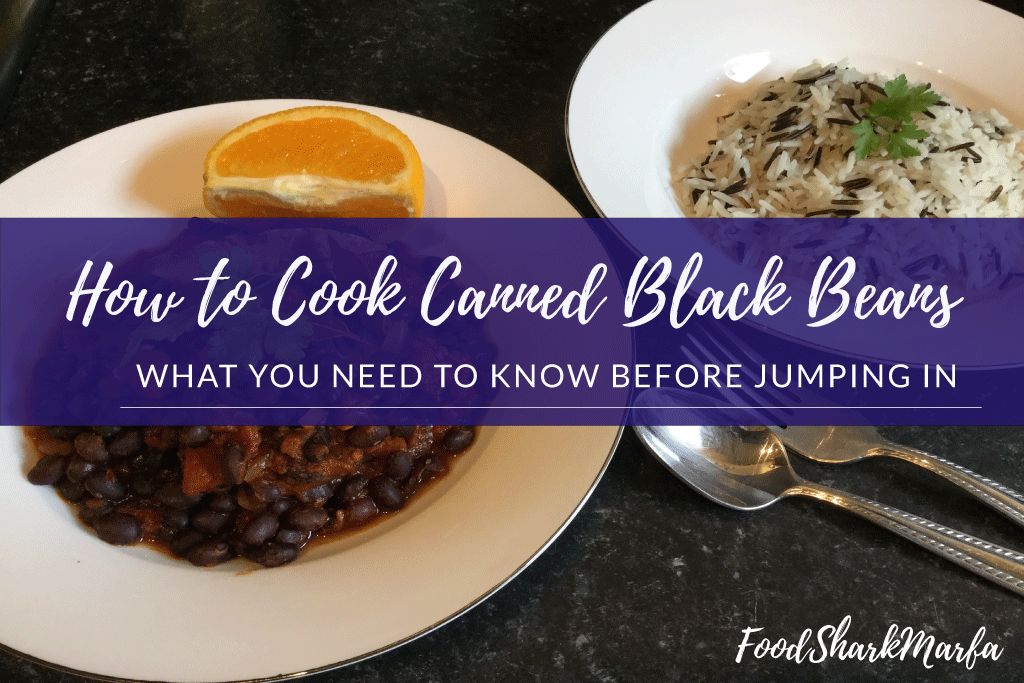Also known as ‘food for the soul’, feijoada, or black bean stew is traditionally eaten over an extended lunch period amongst family and friends in Brazil. Valued both as the national dish of Brazil and a comfort food, it should be eaten slowly and savored, making it perfect for informal family dinners. Because black bean stew can be made with such a range of ingredients, it is ideal for cooking up canned black beans as well as a nutritious and tasty way to use up the leftovers that have been hanging around in the refrigerator for a few days!
Cooked pork off the bone, bacon, ribs and sausages can go into a pan of smoky black bean stew along with beef leftovers and more. If you prefer to keep the black bean stew vegetarian or vegan, as I often do, then you can add red and green bell peppers, butternut squash, pumpkin, carrot or any other leftover vegetables in the refrigerator.
In this tutorial I share my enthusiasm for black bean stew; offering a step by step on how to cook canned black beans using ingredients most of us have to hand in our kitchen cupboards. Another reason I love cooking this quick feijoada is that the majority of the 30 minutes or so needed to put this together is actually cooking time rather than preparation time, which means I usually have time to sit down and grab a quick cup of coffee during cooking!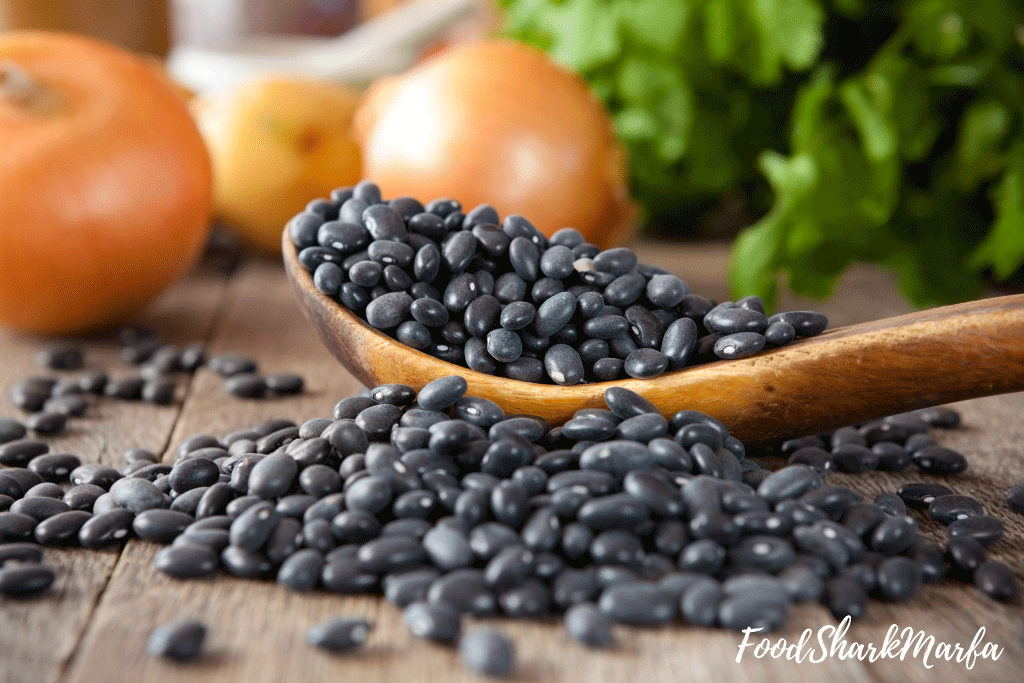
All About Black Bean
Black beans or turtle beans (Phaseolus vulgaris) have been around for 7000 years or so and were a staple in South and Central American diets. Although native to the Americas and still popular today in South American countries, black beans are also popular in Cajun, Creole and contemporary Punjabi cuisines.
Like other legumes such as lentils and peanuts, black beans are high in protein and fiber. Canned black beans are just as nutritious as dried black beans and a serving of black beans (roughly half a can of low sodium drained black beans) is low fat, free from cholesterol and provides 7.62 grams of protein as well as 30% of our recommended daily fiber intake. This serving also gives 6% of our sodium intake and contributes 10% of our iron intake. The fresh oranges traditionally consumed with feijoada can also help increase absorption of the iron from black beans by the body.
Black beans may help to contribute to bone health and because they are high in fiber, they may benefit diabetics who have improved blood sugar levels when they consumed high fiber diets. Also, the fiber in black beans combined with its lack of cholesterol can also bring benefits to heart health as well as promoting our gut health.
Black beans also contain folate which plays a role in repairing damage to DNA in our bodies. DNA damage is linked with many conditions such as diabetes, heart disease and cancer.
Legumes contain galacans which are oligosaccharides. These are complex sugars which our bodies cannot digest as they do not have an enzyme called alpha-galactosidase. This is the reason why eating black beans (and other legumes) can cause some minor stomach disturbances.
If you do not eat black beans very often then you can introduce them to your diet over time as this will help reduce some of the symptoms of discomfort. I must confess that when I haven’t eaten black beans for a while, I can suffer a little discomfort, but once I start eating them again regularly the discomfort disappears!
The current Dietary Guidelines for Americans recommend that we eat three cups of legumes or beans every week.
As well as feijoada, other easy ways to dish up canned black beans includes adding them to burritos, tacos or enchiladas. They also pair well with sweet potato and act as fillers in casseroles and soups.
I sometimes just eat them cold drained from the can with some chopped cucumber, feta and corn with a red wine vinegar dressing, or I mix then with cold leftover rice and add green onion, peppers, cumin and cilantro along with a simple olive oil and lime dressing. Canned black beans also make an easy black bean and shrimp salad with lemon vinaigrette.The Origins of Black Bean Stew (Feijoada)
Considered the national dish of Brazil and in particular the dish of Rio de Janeiro, the name feijoada comes from the Portuguese word feijão for bean.
Like many dishes there are so many different ways of cooking up the stew although black beans are most commonly used in Brazil, some regions of Brazil use brown or red beans while in Portugal, red or white beans may be used as well as black beans.
There is no certainty as to when or how feijoada evolved as a dish. Some historians have linked feijoada to slavery in Brazil, suggesting that the colonial Portuguese slaves who were imported to Brazil from Africa in the mid-sixteenth century began to create the stew from meat scraps and the undesirable parts of the pig such as the trotters, ears and tails along with beans leftover from their master’s meals. Others consider that the stew arrived in Latin America from European settlers who embraced beans as a low cost and low maintenance food crop and began to add meats to it to give it more flavor and nutritional value.
We know that cooking meats with vegetables dates back to when Romans colonized Iberia and this type of stew has its roots in many other dishes such as the French cassoulet and the Spanish cocido madrileno.
Pork is the still traditional meat of choice in today’s feijoada, so you can use pork shoulder, ribs, ham off the bone, smoked bacon or even edible offal such as heart. You can also add sausage and even those stray wieners floating about in the refrigerator. A common ingredient in feijoada is carne seca which is a dried and salted beef available from many South American markets but in its place, you can use jerky or corned beef. Adding chorizo is also popular and traditional in Portuguese feijoada.
Other regions of Brazil add vegetables such as carrots, potatoes, kale and pumpkin to the top of the stew at the end of the cooking time so that the stew steams the vegetables and helps them to keep their texture and flavor.
Feijoada is traditionally served with white rice, greens such as spring greens, cassava flour, pork crackling and the all-important orange slices to aid digestion.What You Will Need to Follow This Tutorial
Although using dried black beans does make a feijoada with an even greater depth of flavor; dried black beans can sometimes be more difficult to source and like cooking with any dried beans or pulses to cook with them needs forward planning for the overnight (or four hour hot) soak and a couple of hours of cooking time.
Making this easy canned black bean stew from scratch with should take no more than 30 to 35 minutes. The recipe detailed below is vegetarian and will serve between 2 to 4 people depending on portion size and sides.
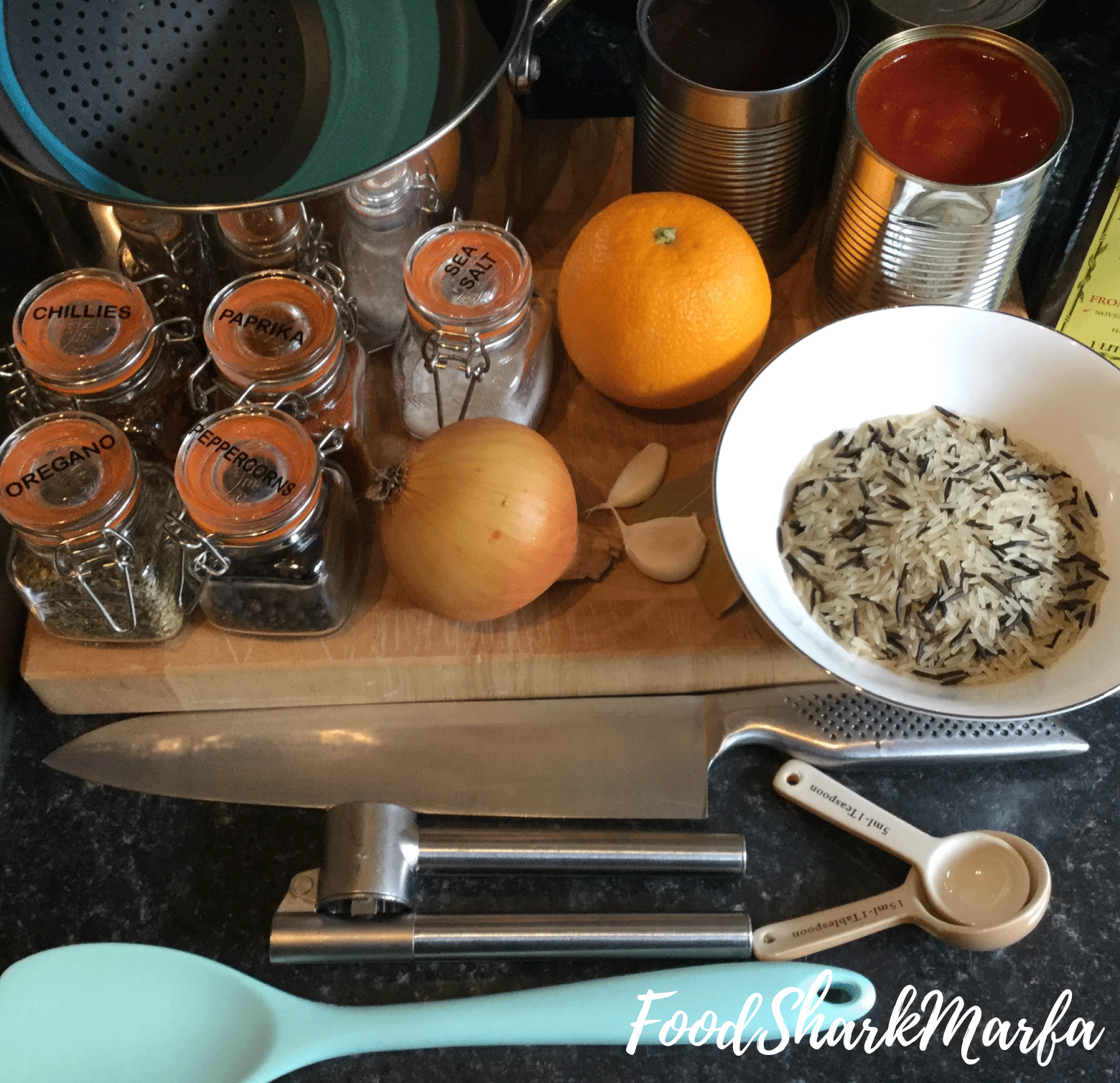
Kitchen Tools Needed for Easy Brazilian Black Bean Stew
- Colander – For draining and rinsing off the canned black beans
- Medium sauce pan with lid – For cooking the black bean stew in
- Spatula – The most suitable for your pan type. I use a silicone spatula to minimize scratching to the pan’s surface.
- Teaspoon and tablespoon – For measuring the herbs and cooking oil with
- Garlic mincer – If you do not have a mincer then you can finely slice or crush your garlic cloves with the flat of your knife and the heel of your hand. To avoid odor on your hands when crushing garlic in this way you can wear a clean dish washing glove
- Chef’s knife – Any all-purpose knife that you are comfortable with
- Cutting board – to protect the countertop when slicing
Ingredients for Easy Brazilian Black Bean Stew
- 2 cans (16 oz) of low sodium black beans
- 1 can (16 oz) chopped/crushed tomatoes - Instead, you can use a 16 oz can of vegetable broth, or if you want to make this with meat, a can of chicken broth
- 1 medium size white onion
- 2 cloves of garlic
- 2 – 3 bay leaves – Depending on the size of leaf
- ½ teaspoon dried oregano
- 1 heaped teaspoon smoked paprika - This is especially important when using canned black beans as it improves the smokiness of the flavor. If you are adding smoked meats, see the pro tip below
- Pinch of chili flakes – Avoid using fresh chilis, unless you have some ready roasted on standby the short cooking time is not long enough to allow fresh chili to come through. You can add a little hot sauce instead of chili
- Salt and pepper to taste – Always add extra salt at the end of cooking and with caution; especially with a pork-rich stew
- 1 orange – for serving
- Fresh cilantro or parsley (optional) – for serving
Optional Ingredients
- Fresh, or ½ teaspoon of dried cilantro to taste with the other herbs
- ¼ teaspoon of cumin
- Selection of pre-cooked or leftover meats
Pro Tip: If you want to add some Spanish style chorizo to feijoada then you can omit the smoked paprika as Spanish chorizo will add this flavor instead. Similarly, you can omit chili flakes if you use a Mexican style chorizo as this will bring some chili heat to the stew.
Pro Tip: If you decide to make feijoada with dried beans in the future, you will need to add a couple of teaspoons of red or white wine vinegar to the black beans during their cooking stage to minimize their gassiness.
Step by Step Instructions
Pro Tip: If you wish to serve this with freshly cooked rice, then you can add your rice to your rice cooker or pan at this point so that it will be ready at around the same time as the feijoada. For this tutorial, I served mine with long grain rice with some whole grain wild rice added as I enjoy the nutty flavor it gives to white rice.
Step 1: Warm up the oil and prepare the onion
Add the tablespoon of olive oil to your sauce pan and turn on the heat to medium setting. While the oil is warming up, finely cut the onion and once cut, add it to the saucepan.
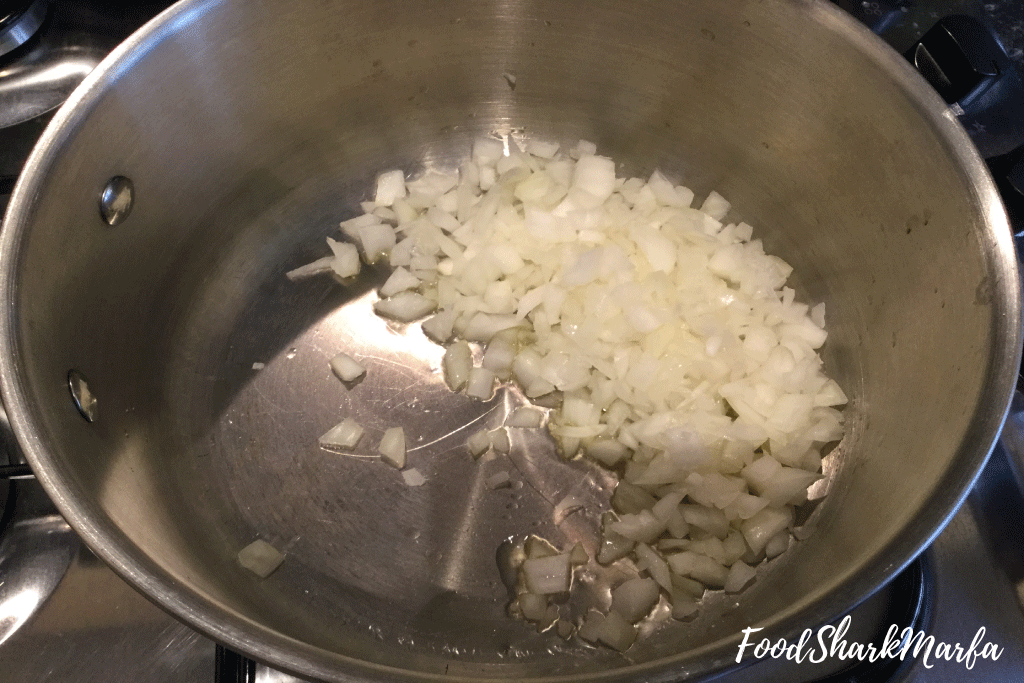
Step 2: Mince garlic and sauté with the onion
Mince the garlic and add to the saucepan and stir with the spatula. Leave the garlic to sauté with the onion, stirring occasionally for between 7 to 10 minutes, or until the onion is lightly browned and soft. Once the onion is ready, turn down the stove top heat as low as it will go. While the onion and garlic is sautéing you can move onto Step 3.
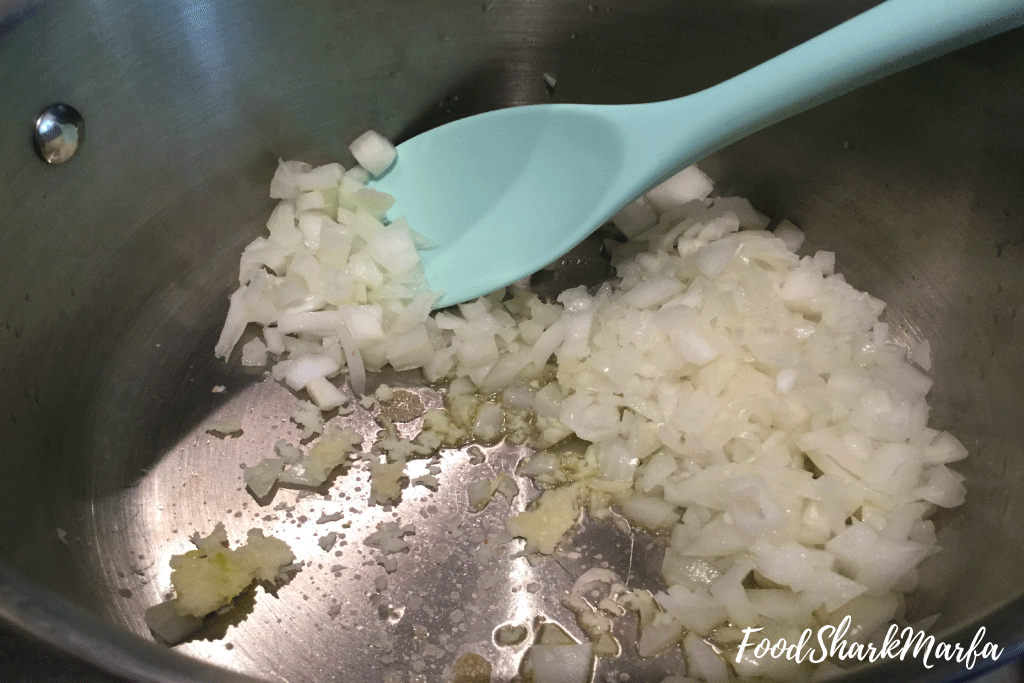
Step 3: Prepare the black beans
Tip the two cans of black beans into the colander and rinse under the faucet. You can add the black beans without rinsing as this will leave the extra starch in for a thicker stew, but it also leaves the added salt in and if you are adding saltier meats to your stew then it may end up a little too salty.
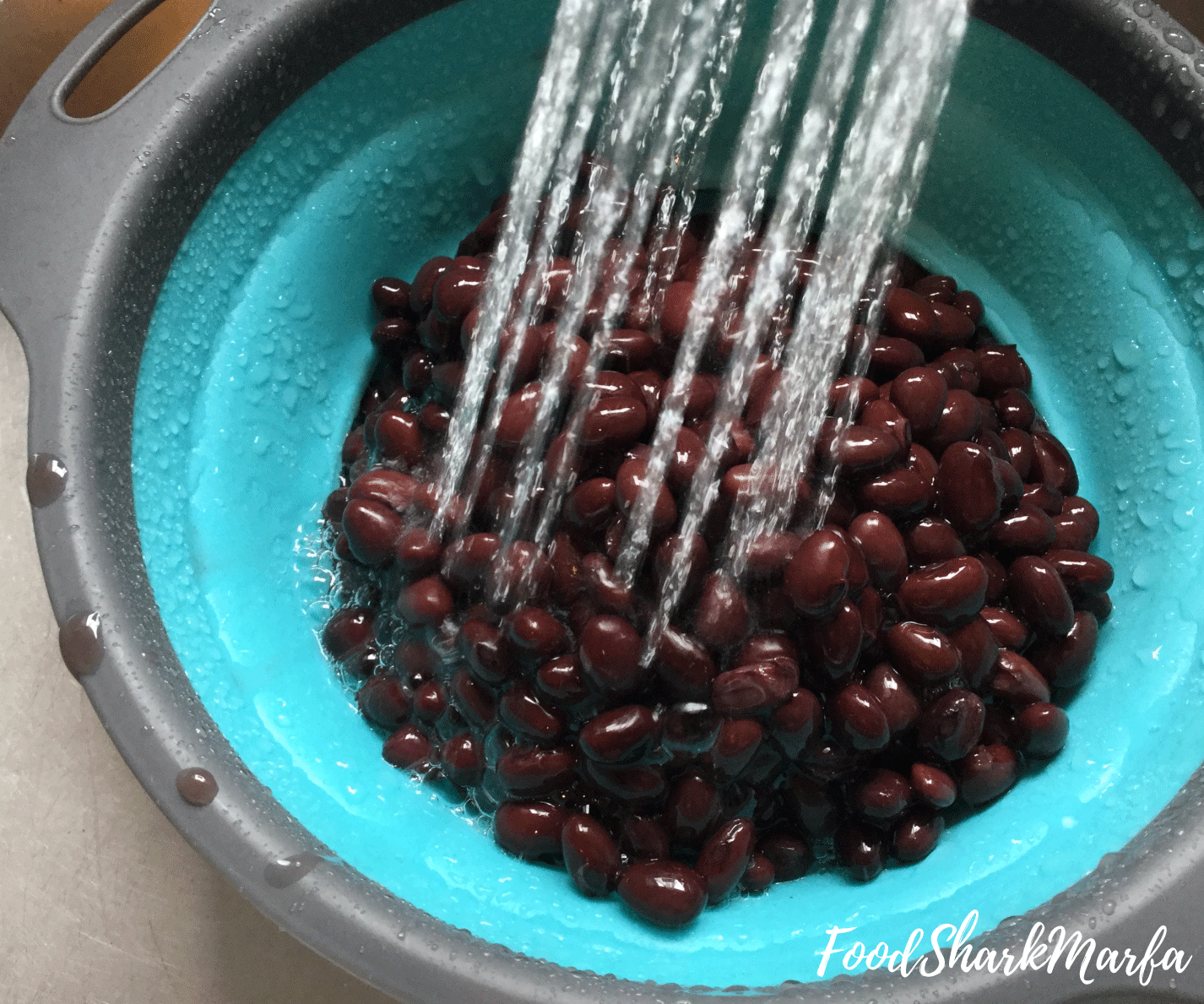
Step 4: Add black beans and chopped tomatoes
Once the onions are lightly browned and soft as in Step 2, add the rinsed black beans to the pan along with the can of chopped tomatoes and stir.
If adding pre-cooked meats, you can add them when sautéing the onions if you want to brown them a little, or during this step when you add the chopped tomatoes (or broth).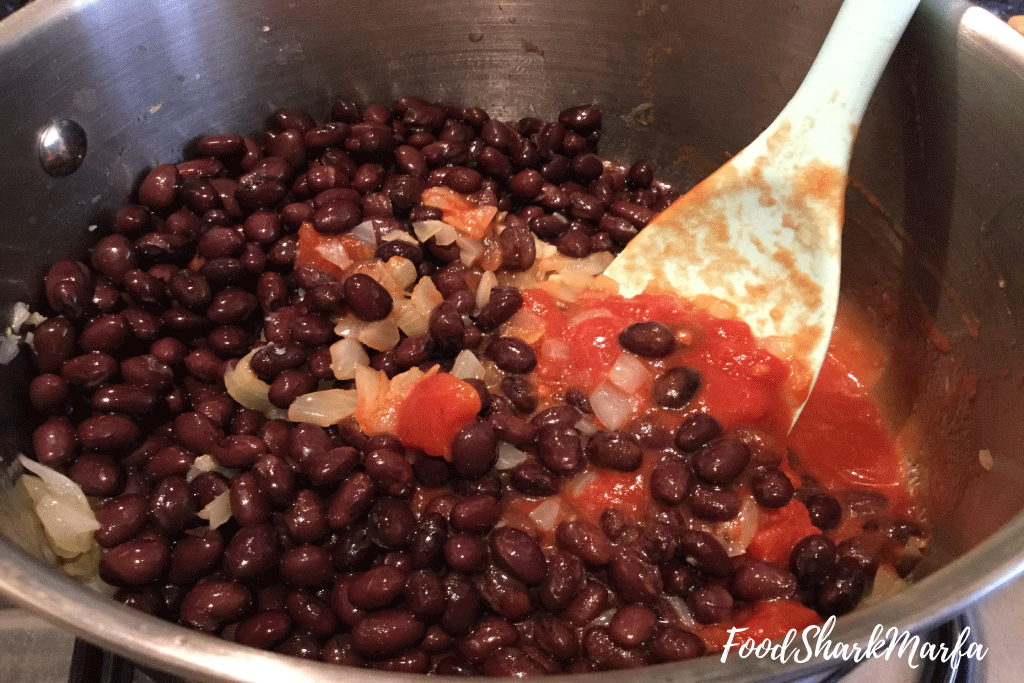
Step 5: Add herbs
Measure out and then add the dried oregano, chili flakes and smoked paprika to the pan. Finally, add the bay leaves. You can add the leaves in a muslin bag if you wish to but unless the leaves break up, it is easy enough to remove them before serving or at the table.
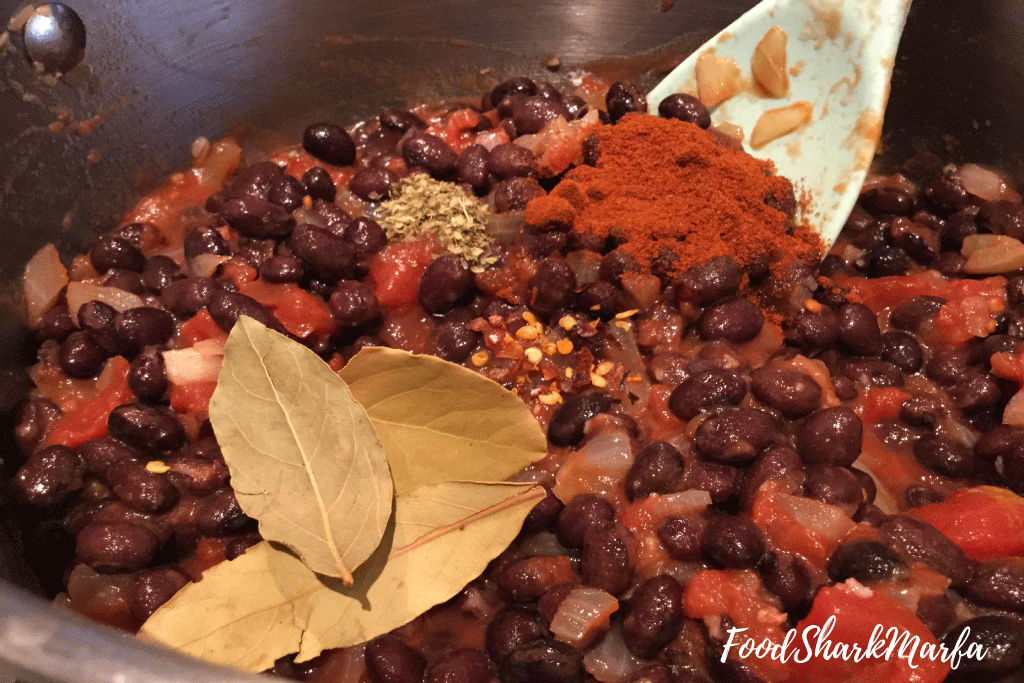
Step 6: Cook
Turn up the heat to medium while gently stirring. Once the stew starts to boil, turn it down to a low light, add the lid and leave it to simmer for 15 to 20 minutes or until all of the flavors have combined. You will need to stir it occasionally to prevent the black beans from sticking to the bottom of the pan. You can also add any salt and pepper to taste at this point.
Pro Tip: If there seems to be too much liquid, you can add a spoonful of tomato paste or, remove the lid and turn up the heat for a few minutes at the end of the cooking time to reduce some of the liquid.Step 7: Garnish and serve
Serve up the feijoada with rice or collard greens. Add orange quarters to the dish as along with rice, the orange will aid digestion of the black beans.
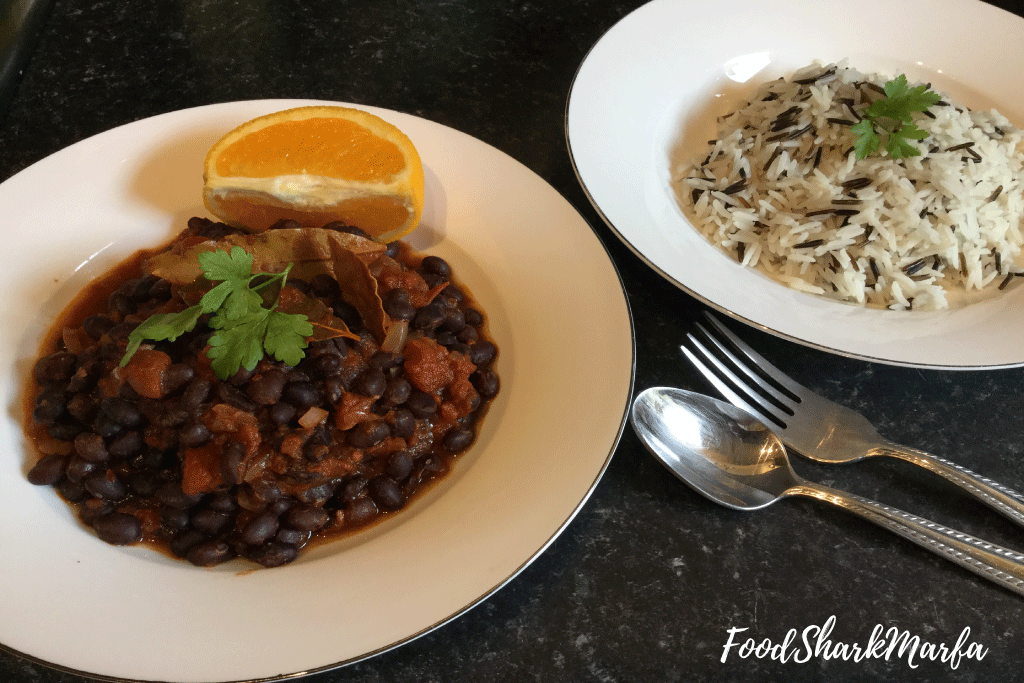
If there is any feijoada left, then once cold, put into a suitable storage container with a lid and refrigerate. Eaten the day after, you will find it tastes even better than it did the first time around!
Feijoada can also be frozen without any significant impact on the quality of the beans. Just remember to take out the bay leaves before freezing. You can either thaw it out in the refrigerator before reheating, or quickly thaw it in the microwave. The feijoada should reach an internal temperature of 165° F as measured with a food thermometer when thawing and heating in the microwave and it should also be heated to this temperature on the stove top after it has thawed in the refrigerator.Conclusion
I hope you have enjoyed my step by step tutorial on how to make a quick and easy black bean stew using canned black beans. I think it is probably such a favorite of mine as not only does it offer a lot of freedom as to what ingredients I add to it, but it is such a tasty way to use leftovers up with minimal fuss!
If you have enjoyed this tutorial, please do share it with your friends, and if would like to add any comments on the recipe, or canned black beans in general, please feel free to add your comments to the section below.
